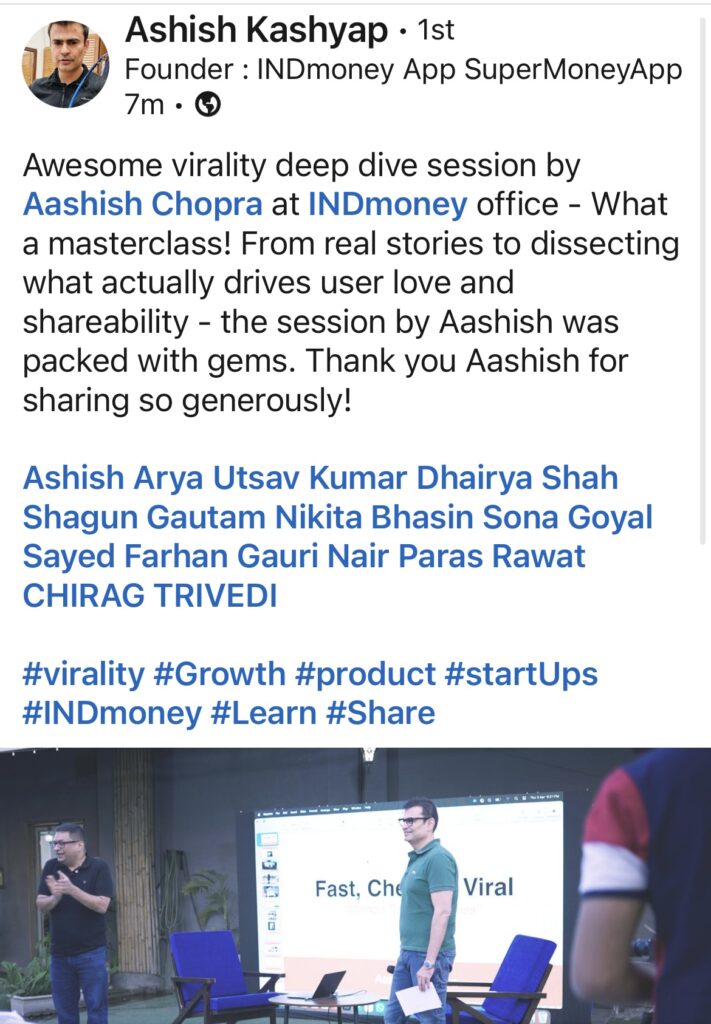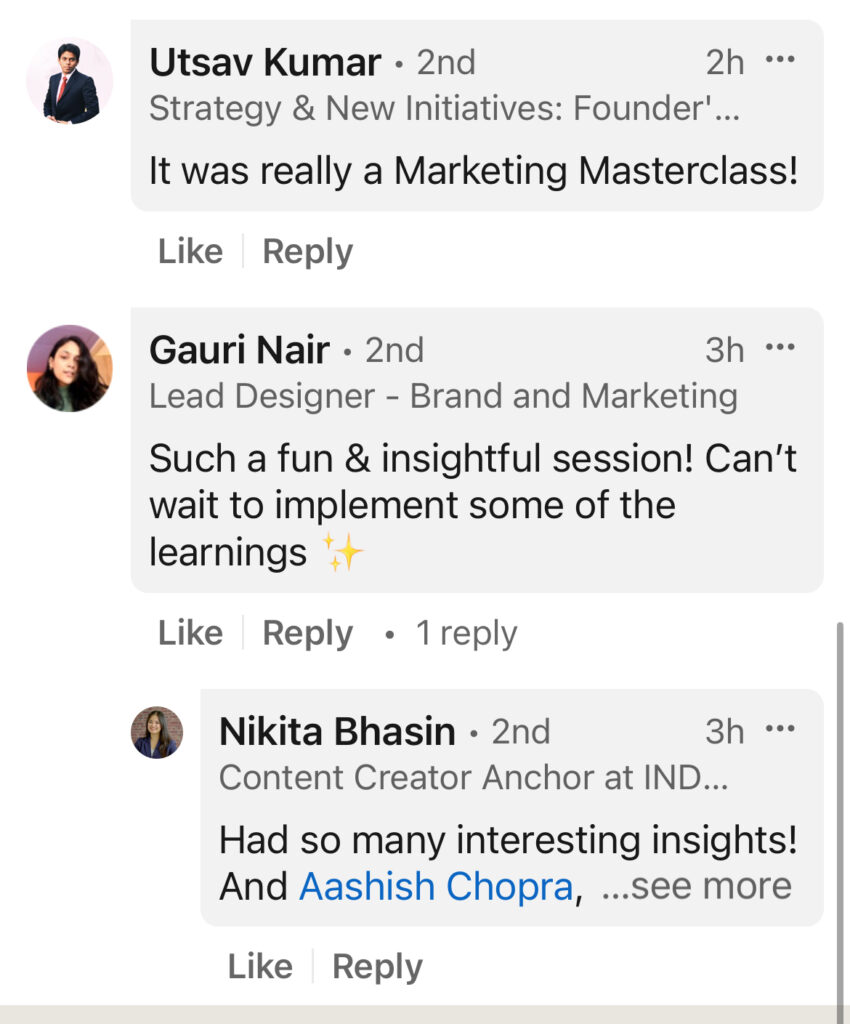The energy, the enthusiasm at INDmoney. The vibe, the culture.. took me right back to early ixigo days. When teams are hungry to learn and experiment, magic happens in the room.
Had a blast doing the Fast, Cheap & Viral session with this incredible crew. Fan of what INDmoney is creating..thanks for having me over! Ashish Kashyap .. grateful :)
PS: Nikita Bhasin loved the interview conversation about all things money to creativity :)





